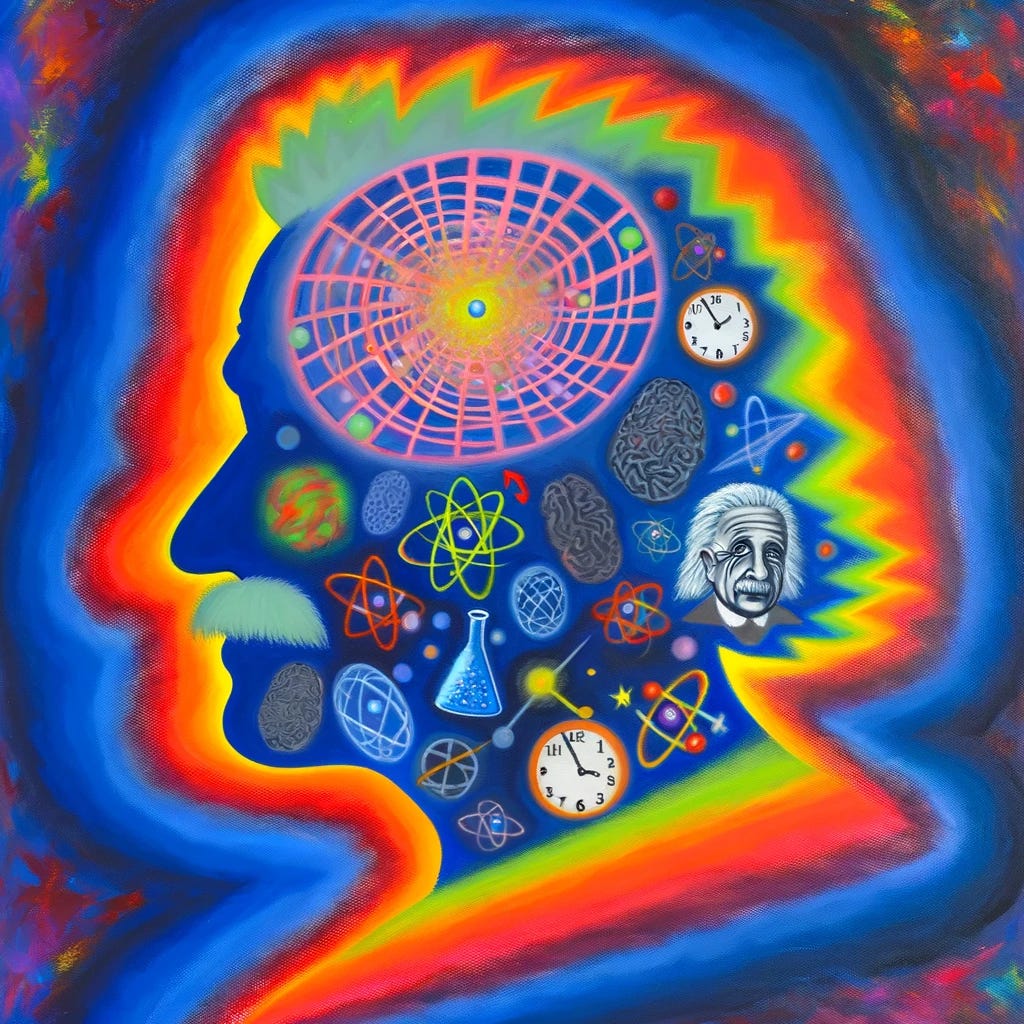Albert Einstein: A Legacy Beyond "Time" on His Death Anniversary
The Life and Legacy of Albert Einstein
Albert Einstein, a name synonymous with genius and creativity, stands as a towering figure in the annals of science. Born on March 14, 1879, in Ulm, Germany, to a Jewish family, Einstein's early academic experiences foreshadowed his revolutionary approach to physics. Despite struggling with traditional schooling, his fascination with mathematics and physics blossomed early. This intellectual curiosity would pave the way for groundbreaking contributions to science. As we commemorate his death anniversary, 18th April, we reflect on the enduring impact of his work and the indelible mark he left on the world of science.
From the Patent Office to Nobel Laureate
Einstein's journey to prominence began in the Swiss Patent Office, where he developed his most significant work during his spare time, through what he called “thought experiments”. It was here, in 1905—his annus mirabilis or "miracle year"—that he published four papers that would reshape modern physics. Among these was his explanation of the photoelectric effect, which later earned him the Nobel Prize in Physics in 1921. This work not only demonstrated the particle nature of light but also laid the foundational concepts for quantum theory.
Personal Life and Escape from Nazi Germany
Einstein's personal life was as complex as his scientific pursuits. His marriage to Mileva Marić, a fellow physicist, was both a personal and intellectual partnership, though it later dissolved leading him to marry his cousin, Elsa. With Marić, he had three children, Lieserl, Hans Albert, and Eduard. The fate of their first child, Lieserl, born before their marriage, remains a mystery as her whereabouts and ultimate fate are unknown.
As Hitler rose to power, Einstein, being Jewish, found himself in mortal danger. He wisely chose to leave Germany, emigrating to the United States in 1933. This move undoubtedly saved his life and allowed him to continue his work at the newly formed Institute for Advanced Study in Princeton, New Jersey.
Relativity and the Quest for Unified Theory
In the U.S., Einstein further developed his theories of relativity. His special theory of relativity introduced the famous equation E=mc2, linking mass and energy. Later, his general theory of relativity proposed a new way of understanding gravitational forces, suggesting that massive objects cause a distortion in space-time, which is felt as gravity. Einstein spent his later years attempting to unify the forces of nature, a quest that remained unfulfilled at the time of his death.
The Brilliance of Special Relativity
Albert Einstein's theory of special relativity, introduced in 1905, revolutionized our understanding of space, time, and motion. At its core, this theory proposed that the laws of physics are the same for all non-accelerating observers, and that the speed of light within a vacuum is the same no matter the speed at which an observer travels. A startling consequence of this is the idea that time can dilate, or slow down, and lengths can contract depending on the speed relative to the observer. This concept of time dilation was not just a theoretical curiosity—it has practical implications for technologies such as GPS satellites, which must account for these differences in time to maintain accuracy.
General Relativity and the Mass-Energy Conversion
Einstein's general theory of relativity, presented in 1915, further expanded the concept of relativity to include gravity, describing it not as a conventional force but as a curvature of spacetime caused by mass and energy. This elegant theory has passed numerous tests over the century, predicting phenomena such as the bending of light by gravity and the expansion of the universe. Linked intrinsically to this is Einstein's famous equation, E=mc2 which describes the principle of mass-energy equivalence. This equation asserts that mass can be converted into energy and vice versa, laying the theoretical foundation for nuclear reactions—both fusion and fission. This insight not only explained the immense power of the sun but also led to the development of nuclear power and atomic weapons, forever altering the course of human history.
Einstein at Princeton: A Sanctuary of Scholarship
Albert Einstein's relationship with Princeton University, where he spent the latter part of his career, symbolized a profound period of intellectual growth and reflection. Joining the Institute for Advanced Study in Princeton in 1933— the year Hitler became the Chancellor of Nazi Germany— Einstein found a sanctuary that not only shielded him from the horrors of Nazi Germany but also provided a stimulating environment surrounded by some of the brightest minds in the world. At Princeton, he delved deeper into his quest for a unified theory of physics, a pursuit that, while ultimately unfulfilled, spurred numerous discussions and explorations in theoretical physics. This serene academic setting allowed Einstein to focus on his work, free from the distractions and dangers of a Europe in turmoil, cementing his legacy as one of the university's most distinguished and celebrated scholars.
Einstein and Gandhi: A Dialogue Across Continents
Albert Einstein's admiration for Mahatma Gandhi's philosophy of non-violent resistance is well-documented, reflecting a profound exchange of ideas between two of the 20th century's most influential figures. Though they never met in person, their correspondence revealed a deep mutual respect and shared commitment to peace. Einstein, renowned for his contributions to physics, was equally vocal about his political and social views, particularly his pacifism.
He saw in Gandhi not just a political leader, but a transformative figure whose methods could inspire future generations. Interestingly, despite Gandhi's global impact through his non-violent approach to achieving Indian independence and influencing civil rights movements worldwide, he never received the Nobel Peace Prize. This omission is often considered one of the most notable oversights in the history of the award. Einstein's dialogue with Gandhi underscores a meeting of minds centered on the power of non-violence and the pursuit of harmony amidst a world prone to conflict.
A Brain to Study, A Legacy to Remember
After his death on April 18, 1955, Einstein's brain was preserved, leading to decades of study that aimed to understand the roots of his brilliance. Known for his pacifist views, Einstein's legacy extends beyond science, influencing philosophy, religion, and the arts. His life and work continue to inspire new generations of thinkers and dreamers.
Summing Up: A Man Like No Other
Rarely has there been a man like Albert Einstein, whose contributions transcended science and touched the realms of philosophy and arts. His interaction with the famous Charlie Chaplin during the premiere of "City Lights" encapsulates his widespread appeal. Chaplin reportedly said, "They cheer me because they all understand me, and they cheer you because no one understands you." Einstein's ability to blend immense scientific insight with personal charisma and moral integrity makes him a timeless icon, whose impact on our understanding of the universe remains unparalleled.



